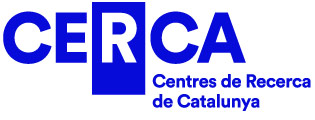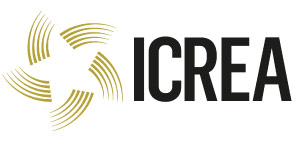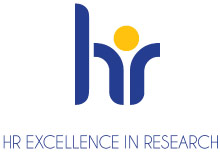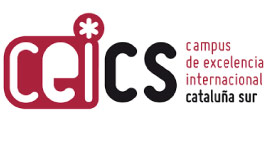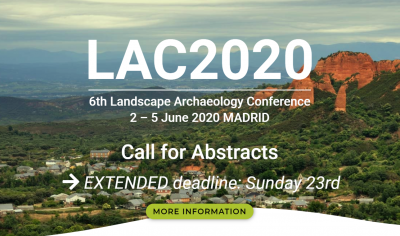
LAC2020 – 6th Landscape Archaeology Conference (2 – 5 June, Madrid).
Five ICAC researchers from the GIAP research team are among the organizers of three sessions in the conference.
Call for abstracts open until 14th February
The next Landscape Archaeology Conference (LAC) will take place in Madrid in June of 2020. Since the first meeting in Amsterdam in 2010, the biennial conferences of the International Association of Landscape Archaeology-IALA have developed a certain prestige and tradition. The conference is both international and interdisciplinary and is open to an increasing number of participants.
Landscape Archaeology is much more than just archaeology, it is a composite of methodologies that encompasses various disciplines such as anthropology, environmental science, geography, geology, cultural heritage management, landscape architecture and history. Thus, the LAC 2020 is a forum where sedimentological study and the history of art both coexist.
#Session 08. Advances in archaeological survey
Josep M. Palet, Hector A. Orengo, Merkourios Georgiadis and Arnau Garcia-Molsosa co-organized this session on new methodological research on archaeological survey, along with Thomas P. Leppard, Elif Koparal, Toby C. Wilkinson and Athanasia Krahtopoulou.
Abstract: Pedestrian archaeological survey has a long archaeological pedigree and, in different forms, has been applied since the beginnings of the discipline. With the integration of quantitative methods in the late 70s pedestrian survey became a more efficient tool capable of providing dimensions of information beyond the basic location and chronology of archaeological sites. Systematic pedestrian surveys have had a large influence in landscape archaeology, providing a constant source of theoretical and methodological developments. From the very definition of archaeological ‘site’ in relation to concentrations of material culture to concerns involving occupation density and continuous landscape use, survey data has underpinned evolving discussions on the nature and focus of landscape archaeology.
#Session 09. Archaeological site detection with machine learning and other computational approaches
Co-organized by Hector A. Orengo, Arnau Garcia-Molsosa, Francesc C. Conesa and Cameron A. Petrie.
Abstract: Although machine learning (ML) and deep learning (DL)-related methods have been in use for several decades, they have been applied to archaeological problems only recently. Some early implementations focussed on the classification, seriation and analysis of material culture, such as artistic representations (Barceló 1995a and 1995b, Di Ludovico and Ramazzotti 2005), use-wear of prehistoric tools (Van den Dries 1998), historical glass artifacts and ancient coins (Van der Maaten et al. 2007). The application of ML and DL in archaeology has experienced a strong turn towards the detection of archaeological sites during the last years (but see Wright and Gattiglia 2018 for the identification of ceramic fragments and Oonk and Spijker 2015 for geochemical analysis). Since the pioneering work of Menze and Ur (2012), the wider availability of data (in particular multispectral satellite data and high-resolution lidar), cloud computing platforms and ready-made AI tools and code have boosted ML and DL site-based detection (e.g. Lisset al. 2017, Trier et al. 2019, Verschoof-van der Vaart and Lambers 2019, Orengo and Garcia-Molsosa 2019).
ICAC researcher Lídia Colominas co-organized this session on bioarchaeological approaches that enrich and expand the knowledge about mountain environments, leaving old assumptions behind and highlighting the complexity of most of the human activities practised in the mountains and their connections with the lowlands. Along with Marta Moreno-García (Instituto de Historia, CSIC) and Leonor Peña-Chocarro (Instituto de Historia, CSIC).
Abstract: Growing interest in the occupation and exploitation of mountains has shown that human impact was intense and that these areas constitute true cultural landscapes shaped over time. At the same time, the archaeology of the last ten years has seen significant developments in areas related to Bioarchaeology and Palaeoenvironmental Sciences, with the application of innovative techniques such as aDNA, geometric morphometrics or isotopic or lipid analyses. Therefore, at present, there is a novel bioarchaeological dataset that have the potential to yield significant information about the past use of mountain areas, allowing us to rethink our understanding of human, animal and landscape interactions in these sensitive environments over time. Currently, archaeozoological and archaeobotanical approaches integrated in interdisciplinary projects are taking important steps forward in the study of major issues concerned with mountain archaeology, such as the characterization of agro-pastoral activities, the reconstruction of landscape or the adaptation of humans to mountain areas.


